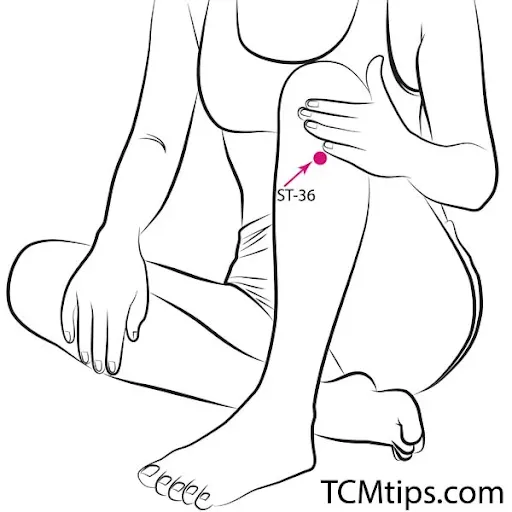The spleen is an important organ in Traditional Chinese Medicine, and it is believed to perform a number of functions.
One of its most important roles is to maintain the overall well-being of the entire digestive system, ensuring optimal nutrient absorption by the small intestine.
In addition, another responsibility of the spleen is to support the body’s immune system and help fight infection.
If the spleen is inflamed, it is weakened and thin, impairing the proper absorption of nutrients. As a result, you’ll lose appetite, and your brain’s ability to think is significantly impaired, potentially causing insomnia.
Many other symptoms can follow, including your body feeling heavy, joints hurting, and neck pain.
In addition to western medical treatment, acupressure on the splenic channel can help alleviate the symptoms, soothe chronic pain, and improve neck pain.
In order to enjoy the benefits of east-west medicine, first, you’ll have to know about the key acupressure points for spleen inflammation.
Acupoint: SP-3 (Other Names: Spleen-3/Tai Bai/Great White)
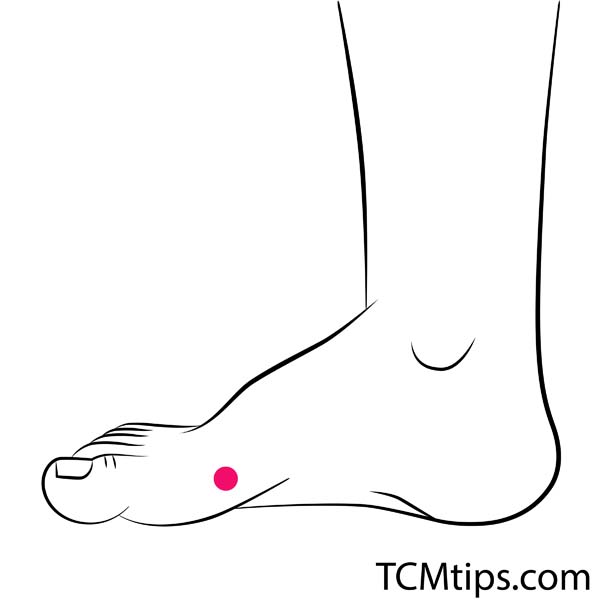
The acupressure point “SP-3”, is represented in mandarin as “Taibai” and in English as “Supreme White.” It is found at the intersection of the red and white skin on the medial part of the foot, in the depression posterior and inferior to the proximal metatarso digital joint of the big toe.
SP-3 is classified as the Yuan-Source point of the Spleen Meridian and Shu-Stream point of the Spleen Meridian. SP-3 is one of the important acupressure points for spleen inflammation which strengthens the spleen, harmonizes and regulates the spleen and stomach, clears Damp-Heat, and resolves dampness.
SP-3 is a Yuan Source Point, which makes it an ideal acupressure point for supporting the spleen’s Transformation and Transportation function in TCM. A study in 2014 was conducted to evaluate the usage of acupoint SP-3 in Saam acupuncture treatment.
SP3 was often utilized for lung, spleen, heart, and kidney meridian tonification and kidney, heart, and lung meridian sedation. SP3 and other acupoints were combined to treat stroke, common cold, and chronic pain conditions such as tooth pain, headache, low back pain, respiratory disease, and gastroenteric issues such as stomachache, indigestion, vomiting, and constipation. SP-3 is also used as one of the acupressure points for peripheral neuropathy.
Acupoint: SP-4 (Other Names: Spleen-4/Gong Sun/Grandfather Grandson)
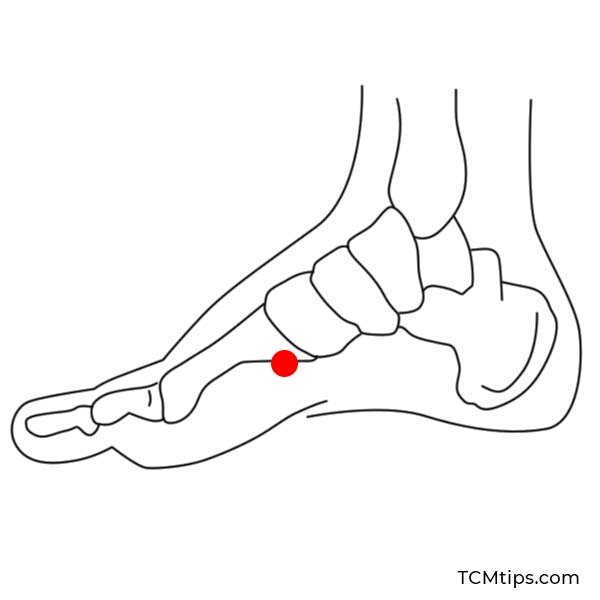
The acupressure point “SP-4”, is represented in mandarin as “Gongsun” and in English as “Grandfather Grandson.” It is found on the medial side of the foot, in the depression distal and inferior to the first metatarsal bone’s base.
Acupoint SP-4 is classified as the Luo-Connecting point of the Spleen Meridian. Strengthens the spleen, balances the middle jiao, eliminates dampness, balances the Chong Mai, and regulates menstruation.
The most basic strategy is to apply firm pressure. For 1-2 minutes, apply consistent, stationary pressure to the point with your thumbs, fingers, palms, side of your hand, or knuckles.
Other than being a potent acupoint to apply acupressure for heart conditions, SP-4 is one of the acupressure points for spleen inflammation and can be utilized for treating spleen and stomach diseases which can manifest as:
– acute gastric pain
– distention and stuffiness
– loss of appetite
– pain around the umbilical region
– diarrhea
– dysentery
– epigastric pain
– chest congestion
– hypochondriac distention
– postpartum faintness,
– shen problems
To use this acupressure point for spleen inflammation, press and rub the SP-4 acupoint with your thumb and fingertips 100 to 200 times, and it might be able to help with abdominal pain.
Acupoint: SP-6 (Other Names: Spleen-6/San Yin Jiao/Three Yin Intersection)
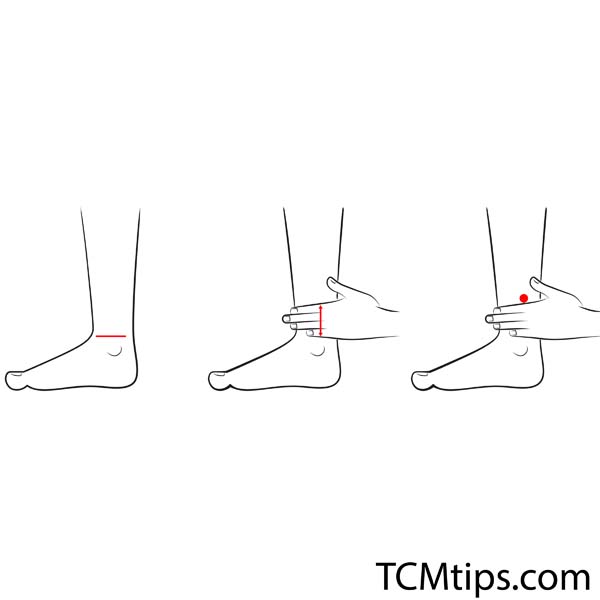
The acupressure point “SP-6”, is represented in mandarin as “Sanyinjiao” and in English as “Three Yin Intersection.” It is found 3 cun above the medial malleolus, on the posterior border of the medial aspect of the tibia, and on the medial aspect of the lower leg.

SP-6 serves as one of the acupressure points for spleen inflammation which:
– enriches the spleen and stomach
– clears dampness
– harmonizes the liver
– fortifies the kidneys
– nurtures blood and Yin
– regulates menstruation
-cools and rejuvenates the blood
– promotes urination
– calms the Shen
Stimulate one of the key acupressure points for spleen inflammation with continuous firm pressure for 2-3 minutes at a time and repeat this 5-10 times.
Since acupoint SP-6 is beneficial in improving spleen functions, it can aid in the treatment of spleen inflammation. A clinical trial was conducted in 2014 to evaluate the effect of acupressure on labor pain and length as felt by pregnant women when acupressure was applied to the SP-6 acupoint.
In addition, the SP-6 acupoint was found to be useful in reducing pain and labor duration. Acupoint SP-6 can help in maintaining and regulating blood pressure making it one of the acupressure points for the heart on the feet.
Acupoint: SP-9 (Other Names: Spleen-9/Yin Ling Quan/Yin Mound Spring)
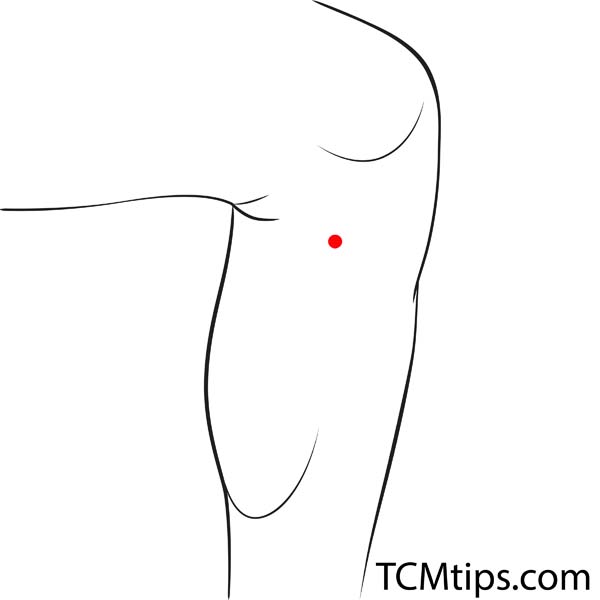
The acupressure point “SP-9”, is represented in mandarin as “Yinlingquan” and in English as “Yin Mound Spring.” It can be located in the depression of the lower border of the medial condyle of the tibia on the medial aspect of the lower leg. This acupoint is classified as the He-Sea point of the Spleen Meridian.
To apply acupressure at SP-9, press gently but firmly for 10-20 seconds, then release and repeat.
SP-9 resolves dampness (particularly in the Lower Jiao), regulates the spleen, and facilitates urination. This acupoint helps with conditions such as:
– dysuria
– urinary incontinence
– edema
– jaundice
– diarrhea
– abdominal distention
– knee pain in the medial aspect
– pain in the penis or vulva
– dysmenorrhea
SP-9 is known to be one of the important acupressure points for spleen inflammation. In 2012, rat models were used to study the application of low-frequency electro-acupuncture.
According to the findings of this study, electro-acupuncture at the Yinlingquan (SP-9) acupoint can increase blood flow in the spleen. SP-9 is also one of the beneficial acupressure points for good digestion during menopause.
Acupoint: SP-10 (Other Names: Spleen-10/Xue Hai/Sea of Blood)
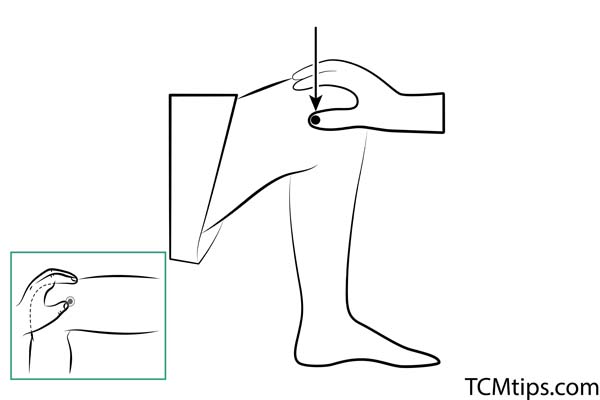
The acupressure point “SP-10”, is represented in mandarin as “Xuehai” and in English as “Sea of Blood.” It can be located when the knee is bent. The point is 2 cun above the media superior border of the patella, on the bulge of the medial section of the quadriceps femoris muscle.
Acupoint SP-10 is a pressure point in the thigh that energizes and pumps the blood, cools the blood, nourishes the skin, regulates menstruation, and aids in the treatment of urticaria eczema, and erysipelas.
Press the SP-10 (Xuehai) point firmly with your fingertips for 1 minute to feel the obvious soreness, 3 to 5 times on each side.
A recent study compared the clinical efficacy of acupuncture artificial menstrual cycle method and medication artificial menstrual cycle method for abnormal uterine bleeding-ovulatory (AUB-O) dysfunction (spleen deficiency syndrome) and concluded that acupuncture on a number of acupoints, including SP-10, was more effective in regulating menstrual circle and improving ovulation.
Another research concluded that a 15-minute treatment of electro-acupuncture or manual acupuncture at specific acupoints, including SP-10, improved hip flexion range of motion (ROM).
Acupoint: ST-36 (Other Names: Stomach-36/Zu San Li/Leg Three Miles)
The acupoint ST-36 is known as “Zusanli” which means “Leg Three Miles.” ST-36 is situated on the anterior aspect of the lower leg, 3 cun below ST 35, one finger-breadth (middle finger) from the anterior crest of the tibia.
ST-36 harmonizes and strengthens the Spleen and Stomach, tones Qi and Blood, fortifies the body and Wei qi, elevates Yang, soothes the Shen, stimulates the meridian, and relieves pain. ST-36 is conventionally used in infections and inflammatory diseases, making it one of the vital acupressure points for spleen inflammation.
Put two fingers together on one of the zusanli points. With two fingers, apply delicate yet strong pressure to the point. Massage the point for 2 to 3 minutes in a circular motion. Repeat on the other side.
In 2017, a pilot experimental study was conducted in Indonesia to investigate comfortable approaches for efficiently treating people with diabetes mellitus. The study concluded that acupressure at the Zusanli (ST-36) acupoint can considerably lower blood glucose levels and that acupressure can minimize and even cure symptoms of diabetes. ST-36 can also be beneficial in applying acupressure for bowel inflammation.

Try our Anti-Aging Gua Sha Tool designed to bring out your skin’s natural glow.
Best Gua Sha Product- Anti-Aging: The tool is designed to target 11 specific aging signs such as wrinkles and sagging skin. By following the 7-step routine, users can improve skin firmness and reduce fine lines naturally.
- Enhances Skincare Routine: It works effectively with serums and lotions, boosting absorption and efficacy of skincare products.
- Visible Skin Improvement: Users can expect a smoother complexion, reduced puffiness, and a more youthful appearance.
 P. Sze
P. Sze 
